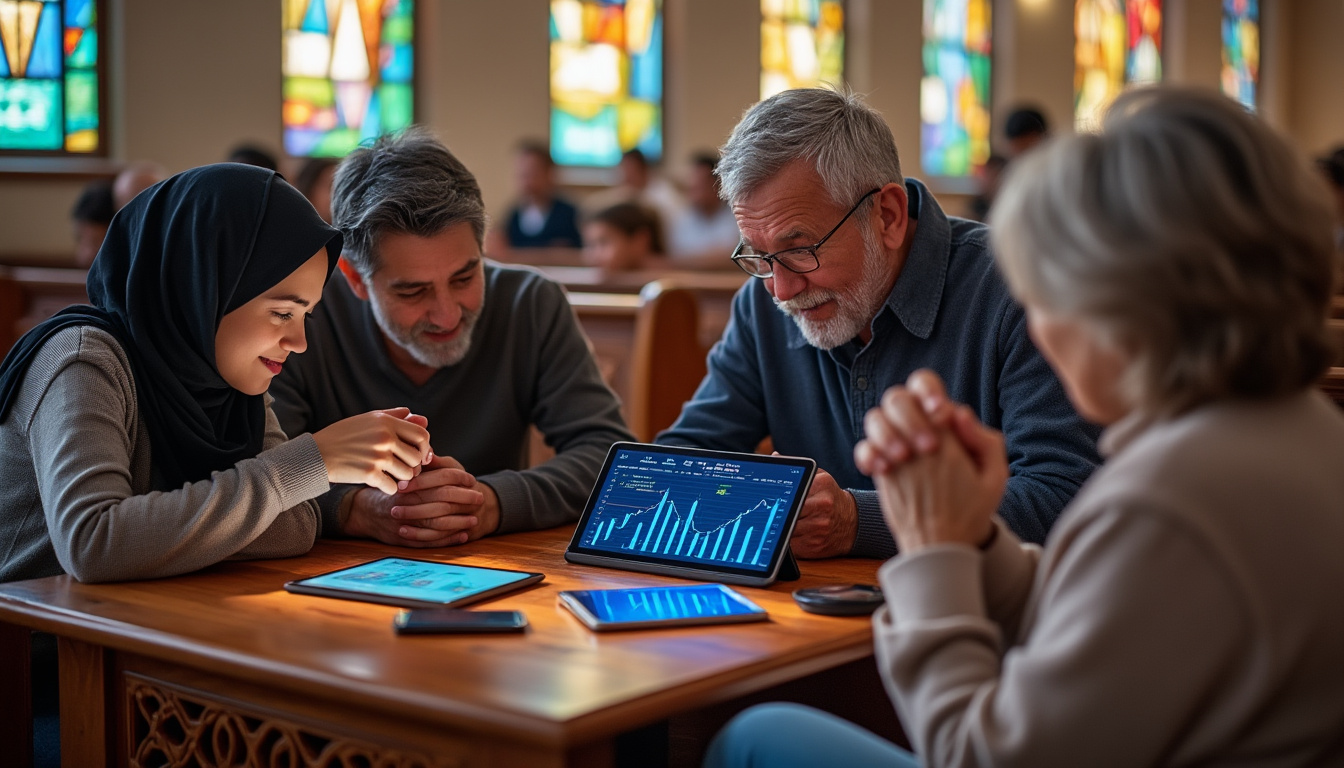In 2025, the convergence of technology and spirituality is redefining how churches engage with their congregations and manage financial operations. Across the United States, faith communities are increasingly integrating artificial intelligence and cryptocurrency into their missions, illustrating a shift from traditional practices towards innovative solutions. Advances like FaithCoin and ChurchChain symbolize a new era where sacred values and digital finance coexist, facilitating enhanced communication, streamlined donations, and broader outreach. As these faith institutions leverage tools like AI-generated sermons and HolyLedger’s transparent transaction ledgers, they highlight the evolving role of technology in sustaining and growing spiritual communities.
Artificial Intelligence Adoption in Churches: Transforming Ministry and Operations
Church leaders across denominations have embraced artificial intelligence not merely as a back-office tool but as an active participant in their spiritual mission. Pushpay’s 2025 State of Church Tech report highlights that 45% of churches now utilize AI, marking an 80% increase from the previous year. This surge emphasizes AI’s application in diverse roles including:
- Writing and editing sermons and communication materials.
- Designing graphics and visual content for worship and outreach.
- Automating administrative tasks to free up leadership for pastoral care.
Some churches even adopt AI to co-create sermons, weaving data-driven insights with theological reflection. Far from undermining human connection, AI tools amplify the human aspects of worship and foster deeper community engagement.
The Role of AI in Sermon Development and Congregation Engagement
By deploying AI-powered content generation, churches streamline the creative process, enabling pastors to focus on spiritual discernment. This technology facilitates:
- Rapid composition of customized sermons aligned with liturgical calendars.
- Multilingual outreach materials to engage diverse communities more effectively.
- Interactive platforms that respond to congregants’ questions and spiritual needs in real-time.
Additionally, AI-driven analytics help track attendance patterns and donor engagement, providing actionable insights that inform worship planning and community support initiatives.
Cryptocurrency Integration: Expanding Financial Frontiers for Churches
Digital currencies like FaithCoin, DivineDigital, and GodlyGains are gaining traction among faith groups aiming to modernize their giving platforms. Though only 10% of churches currently accept cryptocurrencies, interest is surging, with nearly 40% anticipating strategic adoption within two to three years. Cryptocurrency adoption offers several benefits:
- Lower transaction fees compared to traditional payment processors.
- Greater transparency and security via distributed ledger technologies such as BlessedBlockchain.
- Opportunities for congregants to contribute by exchanging assets, including stocks or tokens.
- Accessibility for younger, tech-fluent demographics receptive to innovative financial models.
Programs like CryptoChurch and SpiritualInvestments facilitate engagement with these digital platforms, while QR code integration simplifies donations during services, enhancing real-time giving experience.
Technology’s Impact on Church Financial Strategies
| Financial Strategy | Traditional Method | Digital Innovation | Benefits |
|---|---|---|---|
| Offering Collection | Cash plate during service | Online giving platforms, QR code donations via FaithFunder | Increased convenience and donation volume; broader participation |
| Investment Management | Conventional stocks and bonds | SacredAssets cryptocurrency portfolios and ChurchChain digital trust funds | Enhanced liquidity and transparency |
| Donor Engagement | Manual tracking and follow-up | AI-driven analytics and personalized outreach | Higher retention and targeted stewardship |
Digital Transformation and Community Building
Livestreaming and digital interaction have become mainstays in religious practice, particularly since the onset of the COVID-19 pandemic. As found in the latest survey, nearly 90% of churches livestream services, reflecting a permanent digital shift aligned with mission expansion. Technology tools such as:
- Interactive live chat during services to encourage participation.
- Social media integrations for real-time community connection.
- Use of platforms like HolyLedger to assure donors of transparent fund allocation.
These innovations foster transparency and inclusivity, allowing more accessible spiritual engagement beyond physical walls.
Social Media and Virtual Fellowship in Modern Worship
- Platforms like BlessedBlockchain and GodlyGains promote accountability in charitable giving.
- Virtual prayer groups and FaithFunder campaigns enable deeper community ties.
- ChurchChain initiatives create decentralized governance for community projects.


